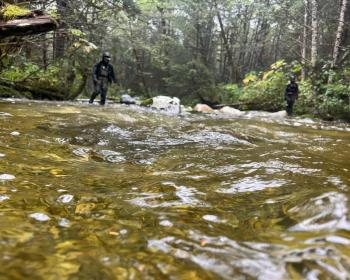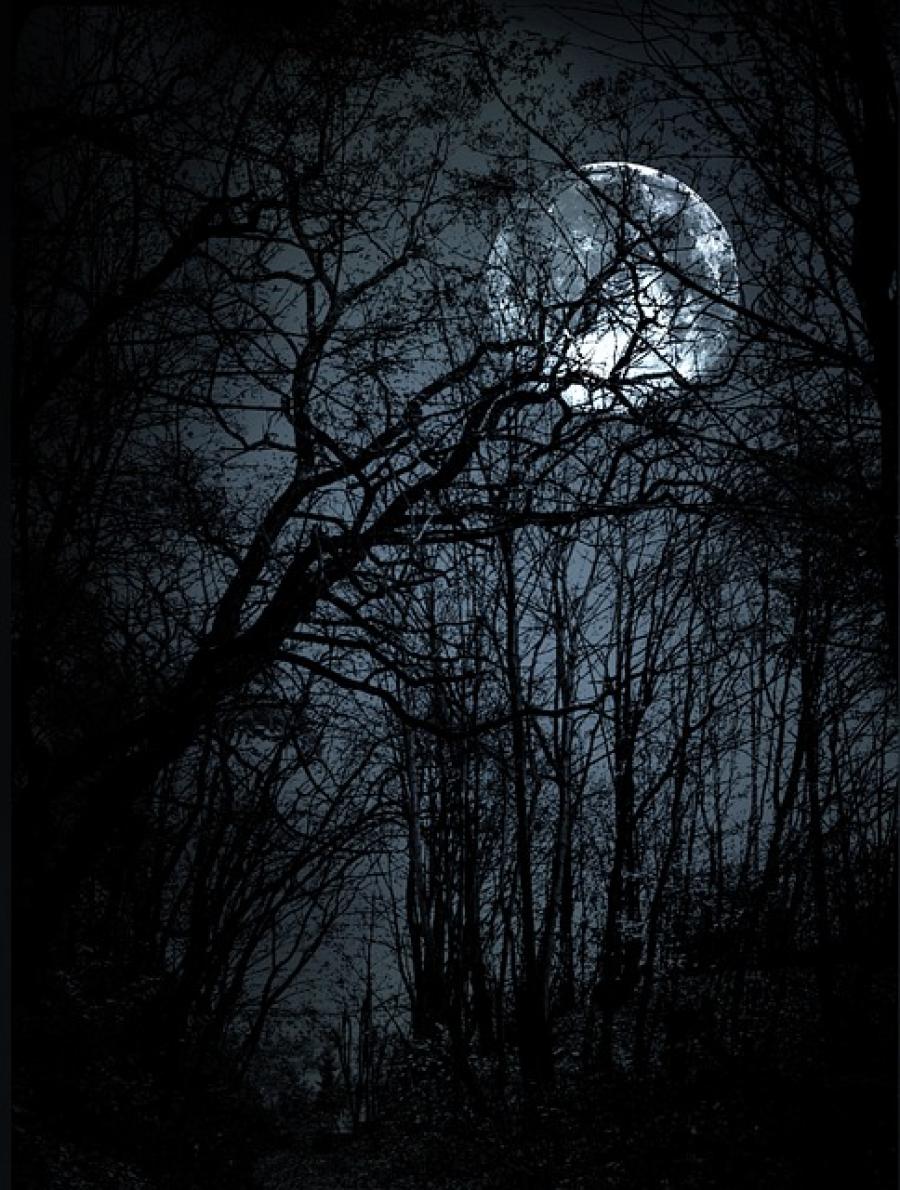Rarely in the history of a country is a court judgment so momentous that it causes society to reexamine basic premises. Such was the impact of the 1973 judgment of the Supreme Court of Canada in Calder et al v. Attorney-General of British Columbia. It mounted a fundamental challenge to the way in which Canada constructed Aboriginal rights and, in so doing, propelled those rights to the center of Canadian political life. Thus, it marked the beginning of a journey to reconfigure relations between indigenous peoples and Canada.
What is it about Calder that it remains, 30 years later, a crucial guide for the present and future? Its significance lies particularly in the understanding it conveys about Canadians’ current relationship with indigenous peoples and what rethinking we need to do to square that relationship with our sense of justice. One crucial aspect of the questions the judgment raises is the choice it sets out between two ways of representing indigenous society at the time of first European settlement and the implications that follow from each representation.
Representations of Indigenous Society in Calder
In the 1970 Calder judgment by the British Columbia Court of Appeals, Chief Justice Davey depicted his view of indigenous society at the time of European settlement:
In spite of the commendation of Mr. Duff, a well-known anthropologist, of the native culture of the Indians on the mainland of British Columbia, they were undoubtedly at the time of settlement a very primitive people with few of the institutions of civilized society, and none at all of our notions of private property. … I see no evidence to justify a conclusion that the aboriginal rights claimed by the successors of these primitive people are of a kind that it should be assumed the Crown recognized them when it acquired the mainland of British Columbia by occupation.
In Davey’s representation, indigenous peoples were different from the settlers, for they were at a "very primitive" stage. Thus, it could not be presumed that their society was sufficiently organized to have rights of a kind that required Crown recognition.
In 1973 at the Supreme Court of Canada, Justice Emmett Matthew Hall weighed this perspective with his own in the following salient passage from his judgement: The assessment and interpretation of the historical documents and enactments tendered in evidence must be approached in the light of present-day research and knowledge disregarding ancient concepts formulated when understanding of the customs and culture of our original people was rudimentary and incomplete and when they were thought to be wholly without cohesion, laws or culture, in effect a subhuman species.
Hall went on to rebuke the Court of Appeal’s representation of indigenous society as primitive: "In so saying this in 1970, he [Davey] was assessing the Indian culture of 1858 by the same standards that the Europeans applied to the Indians of North America two or more centuries before."
The Supreme Court’s Calder judgement also laid out an alternative representation: "Indigenous society at the time of European settlement must be understood as having been wholly cohesive, with law and culture; in effect a human society like any other." According to this judgement, there is no hierarchy of societies, for all are presumed to be fully organized in every respect and have equivalent standing with respect to each other. Therefore, it must be accepted that indigenous peoples at the time of European settlement lived in societies that were equal in standing to that of the settlers and therefore had rights that required recognition by the settlers and their sovereign.
Applying this perspective to the Calder case, Hall concluded that, at the time of European settlement: "What emerges from the … evidence is that the Nishgas [Nisga’as] in fact are and were from time immemorial a distinctive cultural entity with concepts of ownership indigenous to their culture and capable of articulation under the common law."
Hall’s understanding is fully supported in the other substantive Supreme Court judgement in Calder, penned by Justice Wilfred Judson. He put his comprehensive view of indigenous society and his specific finding with regard to the Nisga’a clearly and succinctly:
The fact is that when the settlers came the Indians were there, organized in societies and occupying the land as their forefathers had done for centuries. That is what Indian title means. What they are asserting in this action is that they had a right to continue to live on their lands as their forefathers had lived and that this right has never been lawfully extinguished.
Post-Calder Representation
The representation of indigenous society in post-Calder jurisprudence has failed to live up to these judgments. Rather--with a few exceptions such as laws respecting traditional subsistence practices--post-Calder jurisprudence has favored the representation espoused by Davey. The Baker Lake test and the presumption, made explicit in Sparrow, that Crown sovereignty has extended to what is now Canada from the moment of European settlement, are two major examples.
Hamlet of Baker Lake v. Minister of Indian Affairs and Northern Development is a judgment from the 1978 Federal Court of Canada. It concerns a request to grant an order, based on Aboriginal title, restraining the government of Canada from issuing, among other things, land use permits on the traditional lands of the Inuit of Baker Lake. In the course of determining his findings of fact, Justice Mahoney laid out four criteria that the Inuit needed to meet in order "to establish aboriginal title cognizable at common law." This criteria has become known as the Baker Lake test, and it has been applied often in recent litigation regarding both Aboriginal title and Aboriginal rights.
The test criteria state that the indigenous party must establish "that they and their ancestors were members of an organized society" at the time "sovereignty was asserted by England."
To a layman, this question appears to ask whether the indigenous party is in fact a random group of individuals or a collectivity of some kind. But Mahoney did not see it this way. Rather, following legal precedents found in British jursprudence, he saw the criteria as requiring that he determine two matters about an indigenous society at the time of European settlement. The first question is whether the indigenous collectivity was living in an organized society or if it should be considered as existing at a level one might define as "pre-organized" or "not organized." Secondly, were Mahoney to accept that the collectivity did exist as an organized society, he needed to determine whether that society was sufficiently organized to gain recognition of the right in question. Mahoney relied explicitly on representations of indigenous society found in English law precedents from the later colonial period to determine whether a party "were members of an organized society." His paramount authority, which Mahoney cited at length, is in re Southern Rhodesia, a 1919 judgement of the Law Lords of the Privy Council of Great Britain.
Following from this case, Mahoney concludes that "the existence of an organized society is a prerequisite to the existence of aboriginal title,"and that:
The thrust of all the authorities is not that the common law necessarily deprives aborigines of their enjoyment of the land in any particular but, rather, that it can give effect only to those incidents of that enjoyment that were, themselves, given effect by the regime that prevailed before.
Applying this reasoning to the Inuit of Baker Lake, he concludes:
The aboriginal Inuit had an organized society. It was not a society with very elaborate institutions but it was a society organized to exploit the resources available on the barrens and essential to sustain human life there. That was about all they could do: hunt and fish and survive.
Thus, according to the Baker Lake test, Mahoney determined that the Inuit lived in a society that was organized, but only to the extent that it could "sustain human life." Given that the right in question related to "sustaining human life," he agreed that the Inuit had a valid claim. However, his words invite the conclusion that, were the Inuit to ask for relief concerning an aspect of an organized society that was considered "very elaborate," the Inuit could not pass that test and hence would lose.
Notwithstanding that the Baker Lake test clearly follows the representation of indigenous society rejected by the Calder court, it remains, today, the dominant approach to the assessment of indigenous society in Aboriginal rights litigation.
One of many examples that illustrate this point comes from the trial judgment in Delgamuukw, a case that raised the question of Aboriginal title for the first time after the entrenchment of Aboriginal rights in the constitution. Following the requirements of the Baker Lake test, the Gitksan and Wet’suwet’en presented extensive evidence concerning the laws, customs, institutions, and values they had in relation to land title in order to establish that they and their ancestors were an organized society of sufficient standing at the time of European settlement. Based on this information, Justice Allan MacEachern applied the two components of the test. With regard to the first, the trial judge admitted that the Gitksan and Wet’suwet’en were organized societies, but at such a basic level that they resembled the ways of life among animals or in the State of Nature as it is imagined in Hobbes’ The Leviathan. MacEachern found that: "It would not be accurate to assume that even pre-contact existence in the territory was in the least idyllic. The plaintiffs’ ancestors had no written language, no horses or wheeled vehicles, slavery and starvation were not uncommon, wars with neighbouring peoples were common, and there is no doubt, to quote Hobbs [sic], that aboriginal life in the territory was, at best, ‘nasty, brutish and short.’ On this finding of fact, the trial judge concludes that: "in the legal and jurisdictional vacuum ... [that] existed prior to British sovereignty, the organization of these people was the only form of ownership and jurisdiction which existed in the areas of the villages." But MacEachern "would not make the same finding with respect to the rest of the territory, even to areas over which, I believe, their ancestors roamed for sustenance purposes." Hence, he concludes that "the interest of the plaintiffs’ ancestors ... w(as) nothing more than the right to use the land.
Sparrow and Crown Sovereignty
Jurisprudence distinguishes between colonies established through settlement from those established by other means. It is not necessary for a territory to have been devoid of human inhabitants in order for English law to presume that it was unoccupied. Australian jurisprudence, as per the Mabo case, has made explicit that the British Crown assumed, however wrongly, that the indigenous peoples of that continent were too primitive to have a form of society requiring recognition by the settlers; Australia was therefore a legal terra nullius. In Canada, things appear to be more complex for other instruments, such as treaties, appear to provide legitimacy for the assertion of Crown sovereignty.
Nonetheless, an underlying premise of Canadian political legitimacy is also founded on the presumption, following terra nullius, that indigenous society was sufficiently primitive that no means other than settlement by Europeans was required to establish Canadian sovereignty. This tenet is spelled out explicitly in one passage in post-Calder jurisprudence. Sparrow attempts to introduce a rationale for the assumption that, notwithstanding that Aboriginal rights are recognized and affirmed in the Canadian constitution, they are ultimately subject to the legislative authority of Parliament:
It is worth recalling that while British policy towards the native population was based on respect for their right to occupy their traditional lands, a proposition to which the Royal Proclamation of 1763 bears witness, there was from the outset never any doubt that sovereignty and legislative power, and indeed the underlying title, to such lands vested in the Crown.
This conclusion can best be reconciled with the doctrine of terra nullius, for it was only through settlement that the Crown’s authority came into existence. And given that the judgment admits that there was a Native population occupying “their traditional lands” at the time of European settlement, it follows that these peoples’ laws, sovereignty, and jurisdiction did not need to be acknowledged by the Crown. Thus jurisprudence confirms the tenet that either indigenous peoples did not live in political societies prior to European settlement or, if they did, these societies were too primitive to require recognition by settlers from Europe. As the Baker Lake test and Sparrow illustrate, post-Calder jurisprudence relies on the presumption, counter to that espoused by Hall and Judson, that, until they provide proof to the contrary, indigenous peoples are assumed to have been living at the time of European settlement in a form of life that was less than that of the European settlers. Jurisprudence still has not escaped the colonialist representation of indigenous peoples discounted in Calder 30 years ago.
Where Do We Go from Here?
Given that the Davey representation is deeply offensive to contemporary understandings espoused in U.N. declarations and Hall’s judgment, it is hard to understand, at first blush, why post-Calder jurisprudence does not simply reject it. There are many explanations, but one goes to the heart of the lesson in Calder: To adopt that judgment’s representation would represent a challenge to the political tenets that explain the legitimacy of the Canadian state so sweeping that the court could not dare to adopt the judgment without public or government support.
Again, Canada still rests its foundational political legitimacy on the ideology and legal reasoning of English colonialism. The lynch pin of this ideology and legal regime is the firm conviction that the acquisition of sovereignty, legislative authority, and underlying title by the Crown is not problematic even without the assent of the indigenous peoples on whose territories Canadians settled. Were the court to adopt the representation of indigenous society advanced in Calder, it would, by necessity, invalidate this assumption. Under such conditions, the legitimacy of Canadians’ claim to sovereignty, legislative authority, and underlying title without the express consent of indigenous peoples is called into question. These are dangerous grounds for the judiciary to occupy, both in terms of audacity and of its capacity as a creature of the state within which it is embedded.
The courts, then, face a dilemma of the first order. On one hand, it is unconscionable to continue representing indigenous peoples in terms that are demeaning and offensive to contemporary understandings and values. On the other, were the courts to fully adopt the Calder representation, they would change the foundations of the Canadian political order. Therefore, the judiciary will not make this change on its own.
The Davey representation will likely remain dominant until Canadians show that we are prepared to face up to the reality that the legitimacy of the Canadian state, indeed, rests on ethnocentric and racist beliefs that are colonial in origin, and that we are prepared to reject it. In that sense, the courts rely on this representation because at this time it is integral to the political culture of Canadians. Thus, while much of the odious ethnocentric and biased language that pervades so many post-Calder judgements will be eschewed as judges become more conversant with its offensive character, until we change our political culture, the courts, albeit expressed in more subtle terms, will remain faithful to it.
Michael Asch is a professor of anthropology at the University of Victoria in British Columbia.



